'Masters and Masterpieces: Chinese Art from the Florence and Herbert Irving Collection' At The Met until 5 june 2022
NEW YORK - An outstanding selection of Chinese art gifted to The Met by Florence and Herbert Irving is the focus of this exhibition. Beginning in the early 1970s, the Irvings built one of the most comprehensive and superb collections of Chinese art in the world. For more than three decades, the couple helped The Met acquire important artworks and provided support for exhibitions, and their passion was a factor in building the current exhibition galleries dedicated to Chinese decorative arts. Their generous gifts of more than five hundred exceptional objects fundamentally transformed the holdings of Chinese art at The Met.
The approximately 120 works on display (in each rotation) cover almost all major categories of Chinese art, with a focus on three-dimensional objects, including lacquer, ceramic, metal work, jade, bamboo, and stone carvings. Created by both famous and unknown masters, these extraordinary works represent the artistic sophistication and technical virtuosity of Chinese decorative arts from the tenth through the early twentieth century. In addition to the Irvings’ well-known assemblage of lacquer ware, the exhibition also showcases their recent gifts of a group of jade and bamboo works from the eighteenth-century imperial workshop that have never before been on display. This presentation reunites important private loans formerly in the Irvings’ collection with comparative pieces from The Met collection.
Rotation 1: January 30—October 17, 2021
Rotation 2: October 23, 2021—June 5, 2022
Tea-bowl stand with phoenixes amid flowers, Ming dynasty (1368–1644), Yongle mark and period (1403–24). Carved red lacquer. H. 3 in. (7.6 cm); Diam. 6 1/2 in. (16.5 cm); Diam. of rim 3 3/4 in. (9.5 cm); Diam. of foot 3 1/4 in. (8.3 cm). Gift of Florence and Herbert Irving, 2015 (2015.500.1.35). © 2000–2021 The Metropolitan Museum of Art.
Phoenixes are often associated with imperial women. The sharpness of the outlines and decoration on this tea-bowl stand is typical of works produced at court in the early fifteenth century. Lacquer stands of this type were used to hold ceramic bowls, following the tradition from the Song dynasty (960–1279).
Sutra cover with phoenixes amid flowers, Ming dynasty (1368–1644), 16th century. Satin weave in silk with supplementary metal-thread weft patterning. Overall: 13 11/16 x 4 13/16 x 1/8 in. (34.8 x 12.2 x 0.3 cm). Purchase, Friends of Asian Art Gifts, in honor of James C. Y. Watt, 2011 (2011.221.4). © 2000–2021 The Metropolitan Museum of Art.
Sutra cover with repeating pattern of phoenixes among flowers; gold metallic thread on a red background. Silk satin with supplementary-weft patterning in metallic thread.
Rank badge with two phoenixes, Ming dynasty (1368–1644), 16th century. Silk and metal thread tapestry (kesi). Overall: 13 3/4 x 13 3/4 in. (34.9 x 34.9 cm), Mount: 17 1/2 x 18 in. (44.5 x 45.7 cm). Fletcher Fund, 1936 (36.65.31). © 2000–2021 The Metropolitan Museum of Art.
The phoenixes appear in a symbolic landscape of clouds, waves, and a decorative rock surrounded by colorful flora: (clockwise from lower left) auspicious fungus, camellia, prunus, and (dominating the right) tree peonies. Unpatterned edges at the top and bottom of the textile (now hidden under the mat) suggest it was woven for a special purpose, probably as a decorative rank insignia for a female member of the imperial household.
Covered box with dragons and phoenixes, Ming dynasty (1368–1644), Jiajing mark and period (1522–66), mid-16th century. Porcelain painted with cobalt blue under transparent glaze (Jingdezhen ware). H. 7 in. (17.8 cm); Diam. 12 3/4 in. (32.4 cm); Diam. of foot 8 3/8 in. (21.3 cm). Gift of Stanley Herzman, in memory of Adele Herzman, 1991 (1991.253.46a). © 2000–2021 The Metropolitan Museum of Art.
Covered square box with dragon, Ming dynasty (1368–1644), Wanli mark and period (1573–1620), dated 1610. Polychrome lacquer with filled-in and engraved gold decoration. H. 4 5/8 in. (11.7 cm); W. 10 1/8 in. (25.7 cm); D. 10 1/8 in. (25.7 cm). Gift of Florence and Herbert Irving, 2015 (2015.500.1.55a, b). © 2000–2021 The Metropolitan Museum of Art.
Rectangular tray with fish chime, treasures, and clouds, Qing dynasty (1644–1911), Qianlong mark and period (1736–95). Polychrome lacquer with filled-in and engraved gold decoration, 1 3/4 × 8 11/16 × 12 3/16 in. (4.4 × 22 × 31 cm). Gift of Florence and Herbert Irving, 2015 (2015.500.1.97). © 2000–2021 The Metropolitan Museum of Art.
The two fish on this tray are suspended from a pendant in the shape of an ancient stone chime, which represents wishes for happiness and abundance (yuqing). The twin fish is also one of the eight Buddhist treasures—the other seven are arranged in the foreground: a wheel, conch shell, umbrella, parasol, flower, jar, and double knot. Shown with bats and clouds, these symbols convey auspicious wishes beyond religious meaning.
Vase with eight treasures and auspicious symbols, Qing dynasty (1644–1911), Qianlong mark and period (1736–95). Porcelain painted with polychrome enamels over glaze (Jingdezhen ware). H. 21 in. (53.3 cm). Mr. and Mrs. Isaac D. Fletcher Collection, Bequest of Isaac D. Fletcher, 1917 (17.120.191) © 2000–2021 The Metropolitan Museum of Art.
Rock-form ornament with poem composed by the Qianlong Emperor, Qing dynasty (1644–1911), Qianlong period (1736–95), 1757. Jade (nephrite). H. 11 1/2 in. (29.2 cm); W. 7 1/4 in. (18.4 cm). Gift of Florence and Herbert Irving, 2019 (2019.193.2) © 2000–2021 The Metropolitan Museum of Art.
Brush pot with hunting scene, Attributed to Zhou Naishi (Chinese, active 17th century), Ming (1368–1644)–Qing (1644–1911) dynasty, 17th century. Bamboo. H. 5 3/4 in. (14.6 cm); Diam. 5 in, (12.7 cm). Gift of Florence and Herbert Irving, 2015 (2015.500.6.35) © 2000–2021 The Metropolitan Museum of Art.
Brush pot with poem, Attributed to Wang Shihong (Chinese, 1658–1723), Qing dynasty (1644–1911), Kangxi period (1662–1722), 1716. Wood (Huanghuali, or Dalbergia odorifera). Gift of Florence and Herbert Irving, 2015 (2015.500.6.31) © 2000–2021 The Metropolitan Museum of Art.
Brush holder with scene from Investiture of the Gods, Ming dynasty (1368–1644), Chongzhen period (1628–44). Porcelain painted with cobalt blue under transparent glaze (Jingdezhen ware). H. 8 1/2 in. (21.6 cm); Diam. 9 1/2 in. (24.1 cm). Gift of Florence and Herbert Irving, 2015 (2015.500.7.10) © 2000–2021 The Metropolitan Museum of Art.
This vessel depicts a narrative scene from Investiture of the Gods (Fengshen Yanyi), a sixteenth-century mythological novel. On one side, deities surround a fierce, open-mouthed tiger, and on the other, three figures representing Daoism, Buddhism, and Confucianism—Celestial Worthy of Primordial Beginning (Yuanshi Tianzun), Buddha, and Confucius—sit in front of bamboo groves.
Bottle for incense tools (from a set), Attributed to Hu Wenming (Chinese, active late 16th–early 17th century), Ming dynasty (1368–1644), 17th century. Parcel gilt copper alloy. H. 3 7/8 in. (9.8 cm). Gift of Florence and Herbert Irving, 2015 (2015.500.6.24) © 2000–2021 The Metropolitan Museum of Art.
Implements commonly used for burning incense included a box, a burner, a flat-bowled spoon and tongs, and a vase for storing these utensils. The burners are often modeled after archaic bronze vessels. Although it is not clear if the three Chinese objects displayed here (2015.500.6.22–.24) originally formed a set, all are inscribed with the name of the artist, Hu Wenming, and exhibit the same decorative technique.
Incense box (from a set), Attributed to Hu Wenming (Chinese, active late 16th–early 17th century), Ming dynasty (1368–1644), 17th century. Parcel gilt copper alloy. H. 1 1/4 in. (3.2 cm); Diam. 2 7/8 in. (7.3 cm). Gift of Florence and Herbert Irving, 2015 (2015.500.6.23a–c) © 2000–2021 The Metropolitan Museum of Art.
Incense burner (from a set), Attributed to Hu Wenming (Chinese, active late 16th–early 17th century), Ming dynasty (1368–1644), 17th century. Parcel gilt copper alloy. H. 6 1/4 in. (15.9 cm); W. 2 7/8 in. (7.3 cm). Gift of Florence and Herbert Irving, 2015 (2015.500.6.22) © 2000–2021 The Metropolitan Museum of Art.
Hu Wenming is one of the most renowned metalworkers in Chinese history and one of the few whose name and style are discussed in Chinese art-historical writing. Most of the works attributed to Hu Wenming are objects for the use of scholars, such as incense burners and brush pots. They are characterized by densely worked backgrounds covered with naturalistically rendered flowers and other motifs cast in high relief.
Attributed to Yang Mao (Chinese, active mid-14th century), Dish with peonies, Yuan dynasty (1271–1368), 14th century. Carved red lacquer. H. 1/4 in. (.6 cm); Diam. 6 11/16 (17 cm). Gift of Florence and Herbert Irving, 2015 (2015.500.1.70) © 2000–2021 The Metropolitan Museum of Art.
The deep carving of the peonies and leaves in this small dish is typical of Chinese lacquerware produced in the first half of the fourteenth century. A similar example dated before 1333 was recovered during the 1976–84 excavation of a famous shipwreck off the Sinan Islands near the southwestern coast of Korea.
Square dish with long-tailed birds and camellias, Yuan dynasty (1271–1368), first half of the 14th century. Carved black lacquer. H. 1 in. (2.5 cm); W. 7 in. (17.8 cm); L. 7 1/8 in. (18 cm). Gift of Florence and Herbert Irving, 2015 (2015.500.1.5) © 2000–2021 The Metropolitan Museum of Art.
Made in a classic two-bird design, this dish is representative of the style of the early fourteenth century. The lacquer artist achieved a nearly three-dimensional image on a flat surface: deep carving creates the relief effect, and fine incisions for the bird feathers and leaf veins convey texture. The red background is relatively visible compared to examples made later in the century.
Dish with long-tailed birds and flowers, Yuan (1271–1368)–early Ming (1368–1644) dynasty, second half of the 14th century. Carved black lacquer. H. 1 7/16 in. (3.7 cm); Diam. 12 3/8 in. (31.4 cm). Gift of Florence and Herbert Irving, 2015 (2015.500.1.28) © 2000–2021 The Metropolitan Museum of Art.
A sophisticated example of the two-bird design, the compact composition of this dish features flowers and long-tailed birds (shoudai, or paradise flycatchers)—a symbol of a rewarding career and long life—carved in a three-dimensional effect.
Attributed to Zhang Cheng (active mid-14th century), Dish with long-tailed birds and hibiscuses, Yuan dynasty (1271–1368), mid-14th century. Carved red lacquer. H. 1/8 in. (0.3 cm); Diam. 12 3/4 in. (32.4 cm). Gift of Florence and Herbert Irving, in honor of James C. Y. Watt, 2011 (2011.120.1) © 2000–2021 The Metropolitan Museum of Art.
Several features help date this remarkable dish to the fourteenth century. Two birds circle one another playfully in a composition suited to the circular shape. The lush hollyhock blossoms, shown from multiple perspectives, have petals of different sizes that overlap to suggest depth. Long, narrow leaves fill at least three layers of carving, adding to the richness of the surface. The unworked dark background seen here is more commonly found in earlier carved lacquers.
Dish with peafowls and peonies, Ming dynasty (1368–1644), Yongle mark and period (1403–24), early 15th century. Carved red lacquer. H. 1/8 in. (0.3 cm); Diam. 12 3/4 in. (32.4 cm); Diam. of foot 9 7/8 in. (25.1 cm). Gift of Florence and Herbert Irving, 2015 (2015.500.1.29) © 2000–2021 The Metropolitan Museum of Art.
The design of two birds among flowers was popular in Chinese carved lacquers, particularly from the thirteenth to the early fifteenth century. In this example, a pair of peafowls flies amid lush blossoming peonies. Peacocks were found only in forests in far southern China and Southeast Asia, and were therefore considered exotic and auspicious birds in Chinese culture. They were also the insignia for the third rank of civil officials in the Ming and Qing dynasties.
Writing brush with geometric patterns, Southern Song dynasty (1127–1279), 13th century. Lacquer. L.10 1/8 in. (25.6 cm); Diam. 3/4 in. (1.9 cm). Gift of Florence and Herbert Irving, 2015 (2015.500.1.22a, b) © 2000–2021 The Metropolitan Museum of Art.
This brush handle shows all of the characteristics of early Chinese carved lacquer: the geometric design is not standardized, as it would be in a later piece, and the lacquer clearly shows alternating layers of black and red.
Rectangular box with pommel scrolls, Yuan dynasty (1271–1368), first half of the 14th century. Carved red and black lacquer (tixi). H. 2 3/8 in. (6 cm); W. 4 5/8 in. (11.7 cm); L. 7 7/8 in. (20 cm). Gift of Florence and Herbert Irving, 2015 (2015.500.1.1a, b) © 2000–2021 The Metropolitan Museum of Art.
The pommel scroll is so-named because it resembles the shape of a Chinese sword pommel. This design is often seen in objects decorated with layers of contrasting colors of lacquer, particularly red and black. Found predominantly on ceramics, metalwork, and lacquer from the thirteenth century, there is no known explanation for the creation and popularity of this motif. However, it may have been inspired by the antiquarianism of the period, when motifs that were based on, or presumed to be based on, the Chinese Bronze Age were incorporated into the designs of many types of objects.
Dish with pommel scrolls, Yuan (1271–1368)–early Ming (1368–1644) dynasty, second half of the 14th century. Carved red and black lacquer (tixi). H. 1 3/8 in. (3.5 cm); Diam. 12 1/2 in. (31.7 cm). Gift of Florence and Herbert Irving, 2015 (2015.500.1.24) © 2000–2021 The Metropolitan Museum of Art.
Stem cup with stylized clouds, Yuan dynasty (1271–1368), 14th century. Carved red and black lacquer (tixi). H. 4 in. (10.2 cm); Diam. 6 in. (15.2 cm). Gift of Florence and Herbert Irving, 2015 (2015.500.1.85) © 2000–2021 The Metropolitan Museum of Art.
Dish with pommel scrolls, Yuan (1271–1368)–Ming (1368–1644) dynasty, 14th century. Carved black, red, and yellow lacquer (tixi). H. 1 1/16 in. (2.7 cm); Diam. 6 1/2 in. (16.6 cm). Gift of Florence and Herbert Irving, 2015 (2015.500.1.25) © 2000–2021 The Metropolitan Museum of Art.
Box with pommel scrolls, Ming dynasty (1368–1644), 15th–16th century. Carved polychrome lacquer (tixi). H. 1 3/8 in. (3.6 cm); Diam. 4 in. (10 cm). Gift of Florence and Herbert Irving, 2015 (2015.500.1.17a, b) © 2000–2021 The Metropolitan Museum of Art.
This design is commonly known as the "pommel scroll" pattern because the bracket-shaped scroll resembles the pommel of a Chinese sword. The design was popular in lacquer, ceramics, and metalwork in the thirteenth and fourteenth centuries and remained important in carved lacquer in the fifteenth century.
Box with pommel scrolls, Yuan dynasty (1271–1368), 14th century. Ivory. H. 1 7/8 in. (4.8 cm); Diam. 3 1/2 in. (8.9 cm). Gift of Florence and Herbert Irving, 2015 (2015.500.6.5a, b) © 2000–2021 The Metropolitan Museum of Art.
The decoration covering the surface of this box is sometimes known as a pommel-scroll design because it resembles the shape of sword’s pommel. A flowering plum tree and crescent moon made of ivory, gold leaf, lacquer, and glass, are inlaid into the interior of the cover. The motif may allude to any number of earlier poems that evoke the shadows of plum blossoms by moonlight in a night filled with their scent.
Octagonal box with pommel scrolls, Ming dynasty (1368–1644), late 14th–early 15th century. Carved black lacquer with red layers (tixi). Diam. 8 7/8 in. (22.5 cm); H. 51/4 in. (13.3 cm). Gift of Florence and Herbert Irving, 2015 (2015.500.1.3a, b) © 2000–2021 The Metropolitan Museum of Art.
Side table, late Ming (1368–1644)–early Qing (1644–1911) dynasty, 17th century. Wood (huanghuali). H. 39 in. (99.1 cm); W. 20 3/4 in. (52.7 cm); L. 112 1/2 in. (285.8 cm). Purchase, Florence and Herbert Irving Gift and Rogers Fund, 1996 (1996.339) © 2000–2021 The Metropolitan Museum of Art.
Rectangular tray with flowering plums and birds, Yuan (1271–1368)–Ming dynasty (1368–1644), 14th century. Black lacquer with mother-of-pearl inlay. H. 1 3/4 in. (4.4 cm); W. 11 3/4 in. (29.8 cm); L. 24 3/8 in. (61.9 cm). Gift of Florence and Herbert Irving, 2015 (Gift of Florence and Herbert Irving, 2015) © 2000–2021 The Metropolitan Museum of Art.
The wonderful flowering plum tree and two plump birds that fill the center of this tray illustrate the skillful manipulation of shapes and colors of the inlaid motherof-pearl to create a powerful, dramatic scene. Long narrow pieces of iridescent shell define the rock terrain, while irregular pieces form the clump of rocks in front of the trunk of the flowering plum. Fragments of mother-of-pearl create the craggy trunk of the ancient tree, which bears buds in several stages of flowering.
Tray with women and boys on a garden terrace, Yuan dynasty (1271–1368), 14th century. Carved red lacquer, H. 2 3/8 in. (6 cm); Diam. 21 7/8 in. (55.6 cm). Gift of Florence and Herbert Irving, 2015 (2015.500.1.31) © 2000–2021 The Metropolitan Museum of Art.
Scenes of harmonious families featuring women and frolicking children—expressions of the hope for and joy of having offspring—began to appear in Chinese decorative art in the late Song dynasty (960–1279). This massive platter’s relief carving is typical of high Yuan-dynasty style. Three different geometric patterns—respectively delineating sky, water, and land—are testament to the artist’s sophisticated skill. The artist had a sense of humor, too—a boy plays hide-and-seek behind the large garden rock, but shows only his forehead.
Immortal, Qing dynasty (1644–1911), Qianlong period (1736–95), 18th century. Jade (nephrite). H. 11 15/16 in. (30.4 cm); W. 6 1/8 in. (15.5 cm); D. 4 3/4 in. (12 cm). Gift of Heber R. Bishop, 1902 (02.18.411) © 2000–2021 The Metropolitan Museum of Art.
Immortal, Qing dynasty (1644–1911), Qianlong period (1736–95), 18th century. Jade (nephrite). H. 12 in (30.5 cm);; W. 6 1/2 in. (16.5 cm). Gift of Florence and Herbert Irving, 2015 (2015.500.5.12) © 2000–2021 The Metropolitan Museum of Art.
Two immortals. Chinese, Qing dynasty (1644–1911), late 18th century. Jade (nephrite). The Metropolitan Museum of Art, New York, Gift of Heber R. Bishop, 1902 (left); Gift of Florence and Herbert Irving, 2015 (right). © 2000–2021 The Metropolitan Museum of Art.
This pair (with 2015.500.5.12) of sculptural figures is representative of jade carving from the imperial Qing workshop. The figures’ substantial size exemplifies the imperial use of precious luxury materials. Designed as two boy attendants holding plates, the figures are depicted with subtle, mysterious smiles, an indication that they are not from the mundane world but hail from an immortal land.
The story of how they entered The Met collection is also extraordinary. The figure on the left was a gift to the Museum from the prominent jade collector and museum trustee Heber Bishop, in 1902. The Irvings spotted and acquired the other figure decades later, in 1982, and realized it was unquestionably the companion to the Bishop piece. In 2015, the Irving jade was formally gifted to the Museum, and the pair of boys were reunited after a century!
Dish with lobed rim, Southern Song dynasty (1127–1279), 13th century. Lacquer with gilding. H. 1 1/2 in. (3.8 cm); Diam. 7 1/8 in. (18 cm); Diam. of foot 4 3/8 in. (11.1 cm). Gift of Florence and Herbert Irving, 2015 (2015.500.1.20) © 2000–2021 The Metropolitan Museum of Art.
Found in ceramics, metalwork, and lacquer, dishes shaped with overlapping petals first appear in north China about the eleventh century, and the form later becomes a standard motif in the art of the Yuan dynasty (1271–1368). This dish, which has an inscription on the bottom giving the name of the maker or owner—a common practice during the Southern Song dynasty—was likely intended to represent a six-petal camellia, a flower often associated with joy and protection.
Ten dishes with chrysanthemum petal rim, Yuan dynasty (1271–1368), 14th century. Lacquer. Each: H. 7/8 in. (2.2 cm); Diam. 7 in. (17.8 cm). Gift of Florence and Herbert Irving, 2015 (2015.500.1.96a–j) © 2000–2021 The Metropolitan Museum of Art.
Tray with lotus petal rim, Yuan dynasty (1271–1368), 14th century. Lacquer. H. 5/16 in. (0.8 cm); Diam. 8 3/8 in. (21.3 cm). Gift of Florence and Herbert Irving, 2015 (2015.500.1.69) © 2000–2021 The Metropolitan Museum of Art.
Box with camellias, Southern Song dynasty (1127–1279), 13th century. Carved black and red lacquer. H. 1 3/16 in. (3 cm); Diam. 4 1/8 in. (10.5 cm). Gift of Florence and Herbert Irving, 2015 (2015.500.1.16a, b) © 2000–2021 The Metropolitan Museum of Art.
The lacquer body is built on a red-orange ground and has a thin layer of lacquer near the top that outlines the camellia blossoms and leaves in red, an allusion to the color of this flower that blooms around the Chinese New Year. As is typical of the thirteenth century, there is little overlapping of leaves and petals, and much of the ground is exposed. The lack of incisions to indicate the veins of the petals and leaves is another thirteenth-century characteristic.
Pair of dishes with flowers, Ming dynasty (1368–1644), late 14th century–15th century. Carved red lacquer. Diam. (each) 6 in. (15.2 cm). Gift of Florence and Herbert Irving, 2015 (2015.500.1.30a, b) © 2000–2021 The Metropolitan Museum of Art.
Dishes decorated with the laborious and expensive carved lacquer technique, such as these two, were probably never used for dining. Instead, they were displayed and used to offer guests items such as confections. The deep, dense carving of the lacquer helps date this pair (most likely part of a larger set) to the late fourteenth or early fifteenth century. One shows tree peonies set above lotuses, and the other gardenias overlapping roses.
Box with plum spray, Ming dynasty (1368–1644), 16th century. Carved red lacquer. H. 1 3/4 in. (4.4 cm); Diam. 3 1/4 in. (8.3 cm). Gift of Florence and Herbert Irving, 2015 (2015.500.1.102a, b) © 2000–2021 The Metropolitan Museum of Art.
Duster with the flowers of four seasons, Ming dynasty (1368–1644), 16th century. Carved red lacquer. L. (of handle) 11 1/4 in.(28.5 cm). Gift of Florence and Herbert Irving, 2015 (2015.500.1.36) © 2000–2021 The Metropolitan Museum of Art.
This grouping of bamboo, chrysanthemums, orchids, and plum blossoms has rich symbolic meaning. Together, the plants represent both the passing of the seasons and virtues such as perseverance, modesty, purity, and nobility of spirit that were esteemed by the literati class. A member of that class would have used a whisk like this one.
Two mushrooms, Qing dynasty (1644–1911), 18th century. Jade (nephrite). L. 2 in. (5.1 cm). Gift of Florence and Herbert Irving, 2015 (2015.500.5.16) © 2000–2021 The Metropolitan Museum of Art.
Lingzhi mushrooms, Qing dynasty (1644–1911), 18th century. Jade (nephrite). L. 2 in. (5.1 cm). Gift of Florence and Herbert Irving, 2015 (2015.500.5.17) © 2000–2021 The Metropolitan , Museum of Art.
Lingzhi mushrooms, Qing dynasty (1644–1911), 18th century. Jade (nephrite). W. 1 3/4 (4.4 cm); L. 2 in. (5.1 cm). Gift of Florence and Herbert Irving, 2015 (2015.500.5.22) © 2000–2021 The Metropolitan Museum of Art.
Bamboo stalk with insects, Qing dynasty (1644–1911), 18th century. Ivory. L. 8 9/16 in. (21.7 cm); W. 1 3/8 (3.5 cm); H. 13/16 in. (2.1 cm). Gift of Florence and Herbert Irving, 2015 (2015.500.6.9) © 2000–2021 The Metropolitan , Museum of Art.
Pendant in the form of a flower bud, Qing dynasty (1644–1911), 18th century. Jade (nephrite). H. 1/2 ×W. 2 × L. 3 in. (1.3 × 5.1 × 7.6 cm); Other (With tassel and ornament): 1 × 8 1/4 in. (2.5 × 21 cm). Gift of Florence and Herbert Irving, 2015 (2015.500.5.21) © 2000–2021 The Metropolitan Museum of Art.
Quadrangular vase in the form of a Neolithic ritual jade object (cong), Southern Song dynasty (1127–1279), 13th century. Bronze. H. 8 3/8 in. (21.3 cm); W. 2 3/4 in. (7 cm); D. 2 3/4 in. (7 cm). Purchase, Florence and Herbert Irving Gift, 1993 (1993.456) © 2000–2021 The Metropolitan Museum of Art.
The shape of this tube derives from that of Neolithic jade forms known as cong, and its reappearance in metalwork centuries later is typical of the fascination with earlier cultures that marked the twelfth and the thirteenth centuries. The precise function and meaning of the early jade cong remains a subject for debate.
Ritual object (cong), Neolithic period, Liangzhu culture (ca. 3200–2000 B.C.), ca. 2400 B.C. Jade (nephrite). H. 10 in. (25.4 cm); W. 2 3/4 in. (7 cm). Purchase, Sir Joseph Hotung Gift, 2004 (2004.52) © 2000–2021 The Metropolitan Museum of Art.
Quadrangular vase in the form of a Neolithic ritual jade object (cong), Southern Song dynasty (1127–1279), 13th century. Stoneware with celadon glaze (Longquan ware). H. 10 3/8 in. (26.4 cm); W. 4 in. (10.2 cm); D. 4 in. (10.2 cm); Diam. of rim: 3 in. (7.6 cm); Diam. of foot: 3 1/8 in. (7.9 cm); Storage Box: 11 7/8 x 5 5/16 in. (30.2 x 13.5 cm). Casts Collections Fund and Acquisitions Fund, 2007, (2007.193) © 2000–2021 The Metropolitan Museum of Art.
The shape of this vase derives from that of early jades and illustrates the interest in earlier bronze and jade shapes that characterized Chinese culture during the twelfth and thirteenth centuries. Like other shapes that were revived during this period, the shape of this vase continued to be used in ceramic and metalwork for centuries.
Ritual wine container (hu) with mythical creatures, Western Han dynasty (206 B.C.–A.D. 9), 3rd–2nd century B.C. Bronze. H. 11 3/8 in. (28.9 cm); Diam. 9 in. (22.9 cm). Rogers Fund, 1918, (18.56.6) © 2000–2021 The Metropolitan Museum of Art.
Archaic-style vase with fish and birds, Qing dynasty (1644–1911), Qianlong mark and period (1736–95). Jade (nephrite). H. 12 5/8 in. (32 cm). Gift of Florence and Herbert Irving, 2015 (2015.500.5.19) © 2000–2021 The Metropolitan Museum of Art.
ouble cup with mythical beasts, Qing dynasty (1644–1911), Qianlong period (1736–95), 18th century. Rhinoceros horn. H. 3 3/4 in. (9.5 cm); W. 3 1/4 in. (8.3 cm); D. 2 3/4 in. (7 cm). Gift of Florence and Herbert Irving, 2015 (2015.500.6.15) © 2000–2021 The Metropolitan Museum of Art.
The origin of this vessel, often called a “champion vase” in Western scholarship, remains unclear. It is possible that the term is a loose translation of the phrase yingxiong bei, or hero’s cup, a reference to the bird (ying) and bear (xiong) depicted on the front. The dragon-headed scroll pattern that covers the surface is based on imagery found during the Shang (ca. 1600–1046 B.C.) and Zhou (1054–256 B.C.) dynasties. It was most likely adapted from woodblock-print illustrations of antiquities.
Double vessel with mythical beasts (champion vase), Qing dynasty (1644–1911), 18th century. Cloisonné enamel. H. 8 1/2 in. (21.6 cm); W. 3 7/8 in. (9.8 cm); D. 3 1/4 in. (8.3 cm). Gift of Edward G. Kennedy, 1929 (29.110.80a, b) © 2000–2021 The Metropolitan Museum of Art.
The term "champion vase," which appears only in Western writings, refers to vessels that have two narrow vertical compartments connected by a carving of a mythical bird. It may be a loose translation of yingxiong bei, or hero's cup, referring to the bird (ying) and the bear (xiong) upon which it stands. Champion vases were popular during the middle and late eighteenth century, and were manufactured in different media, including jade, cloisonné enamel, and rhinoceros horn.
Archaic-style cup with ring handle, Ming (1368–1644)–Qing (1644–1911) dynasty, 17th century. Jade (nephrite). H. 3 3/4 in. (9.5 cm). Gift of Florence and Herbert Irving, 2015 (2015.500.5.13) © 2000–2021 The Metropolitan Museum of Art.
The abstract bodies of the two intertwined birds on the surface of this cup can be traced to the Bronze Age. The shape of the cup is based on similar jade cups of the Western Han dynasty (206 B.C.–A.D. 9), and so are the multiple raised dots in the background, which derive ultimately from the simulated granulation on the surface of metalwork of the late Eastern Zhou dynasty (770–256 B.C.).
Ink palette carved from an ancient brick, Qing dynasty (1644–1911), 19th century; brick dated A.D. 279. Earthenware, wood. Inkstone with base and cover: H. 2 5/16 (5.9 cm); W. 4 5/8 in. (11.7 cm)
Inkstone: H. 1 1/2(3.8 cm); W. 2 15/16 in. (7.5 cm). Gift of Florence and Herbert Irving, 2015 (2015.500.6.21a–c) © 2000–2021 The Metropolitan Museum of Art.
Pair of ink palettes in the form of the Stone Drum, Qing dynasty (1644–1911), 19th century. Slate. H. 1 1/4 in. (3.2 cm); Diam. 2 1/2 in. (6.4 cm). Gift of Florence and Herbert Irving, 2015 (2015.500.6.30a, b) © 2000–2021 The Metropolitan Museum of Art.
Ritual staff, Ming dynasty (1368–1644), Yongle mark and period (1403–24). Iron damascened with gold and silver. H. 17 in. (43.2 cm); W. 3 in. (7.6 cm); D. 3 in. (7.6 cm). Gift of Florence and Herbert Irving, 2015 (2015.500.6.28) © 2000–2021 The Metropolitan Museum of Art.
Linear scrolls decorate the handle of this ritual staff (khatvanga), which is thought to quell demons and, by extension, the various obstacles found on one's spiritual journey. The finial of the staff consists of an overflowing vase, a long-standing Indic symbol of abundance, set beneath three heads-one human, one decaying, and one skeletal-which symbolize the inevitability of change and death.
Base for a mandala, Ming dynasty (1368–1644), early 15th century. Cloisonné enamel. H. 3 in. (7.6 cm); Diam. 13 1/2 in. (34.3 cm). Purchase, Florence and Herbert Irving Gift, 1992 (1992.331) © 2000–2021 The Metropolitan Museum of Art.
Ceremonial mandalas were used in later forms of Buddhism, including Esoteric Buddhism, which is noted for its complicated pantheon and rituals. Esoteric Buddhism, which developed in India between the fourth and eighth centuries, flourished in Tibet from the tenth century and was influential at the Chinese court after the fourteenth.
This base, most likely produced for use in Tibet, once supported a three-dimensional mandala that probably comprised small sculptures, models of temples and stupas, or colored sands. The decoration combines lotus flowers (Buddhist symbols of purity) at the top with the Eight Buddhist Treasures at the sides. The traditional treasures—a conch, a lotus, a wheel, a parasol, an endless knot, a pair of fish, a banner, and a treasure vase—are here augmented with other auspicious motifs such as coral. Each treasure appears atop a lotus flower.
Tripod incense burner with lid, Ming dynasty (1368–1644), early 15th century. Cloisonné enamel. H. 5 13/16 in. (14.7 cm); Diam. 5 1/4 in. (13.4 cm). Gift of Florence and Herbert Irving, 2015 (2015.500.6.32a, b) © 2000–2021 The Metropolitan Museum of Art.
Foliated dish with floral scrolls, Ming dynasty (1368–1644), early 15th century. Cloisonné enamel. H. 1 in. (2.5 cm); Diam. 6 in. (15.2 cm). Purchase, Florence and Herbert Irving Gift, 1993 (1993.338) © 2000–2021 The Metropolitan Museum of Art.
Lively scrolling lotuses and acanthus leaves are set against a turquoise blue background on the interior (and parts of the exterior) of this dish. In fifteenth-century examples, this background color is often combined with shades of red, yellow, cobalt blue, white, and dark green, which were not mixed but placed individually within each cloison. Although cloisonné was known in China in the fourteenth century, fifteenth-century pieces, such as this dish, are the earliest preserved examples.
Foliated plate with rocks, plants, and melons, Yuan dynasty (1271–1368), 14th century. Porcelain painted with cobalt blue under transparent glaze (Jingdezhen ware). Diam. 15 3/4 in. (40 cm). Gift of Stanley Herzman, in memory of Adele Herzman, 1991 (1991.253.35) © 2000–2021 The Metropolitan Museum of Art.
The haphazard placement of the various motifs in the interior of this plate reflects the influence of Central Asian textiles in Chinese art of the Yuan dynasty.
Basin with birds in a lotus pond, Yuan (1271–1368)–Ming (1368–1644) dynasty, 14th century. Bronze. Diam. 19 in. (48.3 cm). Gift of Florence and Herbert Irving, 2019 (2019.193.10) © 2000–2021 The Metropolitan Museum of Art.
Toggle in the shape of a falcon attacking a swan, Liao dynasty (907–1125), 10th–11th century. Rock crystal. H. 1 in. (2.5 cm); W. 1 in. (2.5 cm); L. 3 in. (7.6 cm). Purchase, Jack Jacoby Gift, 2004 (2004.202) © 2000–2021 The Metropolitan Museum of Art.
Belt slide with a falcon attacking a swan, Jin (1115–1234)–Yuan (1271–1368) dynasty, 12th–14th century. Jade (nephrite), 1 7/8 × 2 5/8 × 1/2 in. (4.8 × 6.7 × 1.3 cm). Purchase, Florence and Herbert Irving Gift, 1991 (1991.483) © 2000–2021 The Metropolitan Museum of Art.
This carved jade belt slide shows a small falcon hunting a wild goose amid lotus flowers. The motif symbolizes the spring hunting of the Jurchens, a seminomadic people who lived beyond China’s Great Wall in the northeast. Known as chunshui (spring water) in historical texts, the hunt was an important ritual that the Jurchens practiced year after year, and Manchu royalty continued it during the Qing dynasty (1644–1911).
Zhang Family Workshop, Pillow with a falcon attacking a swan, Jin dynasty (1115–1234), 12th–13th century. Stoneware painted with brown and black pigment on white slip under transparent glaze (Cizhou ware). L. 16 1/8 in. (41 cm); H. 6 1/8 in. (15.5 cm); D. 11 3/4 in. (29.8 cm). Gift of Ernest Erickson Foundation, 1985 (1985.214.132) © 2000–2021 The Metropolitan Museum of Art.
The spring hunt and a related event were integral to the yearly cycle of the Jurchen, a nomadic people from the northeast who controlled much of northern China as the Jin dynasty. The motif of a tiny hawk capturing a much larger swan (or goose) was found in jade, textiles, and ceramics produced during their rule.
Swan, Song (960–1279)–Yuan (1271–1368) dynasty,12th–14th century. Jade (nephrite). H. 1 3/4 in. (4.4 cm); W. 2 1/2 in. (6.4 cm); L. 3 1/8 in. (7.9 cm). Gift of Florence and Herbert Irving, 2015 (2015.500.5.4) © 2000–2021 The Metropolitan Museum of Art.
Fitting in the shape of a mythical bird, Tang dynasty (618–907), 8th century. Jade (nephrite). L. 3 in. (7.6 cm). Gift of Florence and Herbert Irving, 2015 (2015.500.5.5) © 2000–2021 The Metropolitan Museum of Art.
Two belt hooks with archaistic patterns, Qing dynasty (1644–1911), 18th century. Jade (nephrite). a: H. 3/4 in. (1.9 cm); W. 1 in. (2.5 cm); L. 4 1/2 in. (11.4 cm); b: H. 1 in. (2.5 cm); W. 1 3/8 in. (3.5 cm); L. 4 1/8 in. (10.5 cm). Gift of Florence and Herbert Irving, 2015 (2015.500.5.8a, b) © 2000–2021 The Metropolitan Museum of Art.
Belt hook with twin fish, Qing dynasty (1644–1911), 18th century. Jade (nephrite). L. 4 1/2 in. (11.5 cm); W. 1 3/8 in. (3.5 cm); D. 1 in. (2.5 cm). Gift of Florence and Herbert Irving, 2015 (2015.500.5.10) © 2000–2021 The Metropolitan Museum of Art.
Rectangular box in imitation of a pack of books, Qing dynasty (1644–1911), 18th century. Black lacquer inlaid with bone. H. 2 5/16 in. (5.8 cm); W. 7 in. (17.8 cm); L. 12 5/8 in. (32 cm). Gift of Florence and Herbert Irving, 2015 (2015.500.1.91a, b) © 2000–2021 The Metropolitan Museum of Art.
The corner of this lid is inlaid with four characters: huang shi yi bian, meaning “inherited book from Yellowstone.” This inscription refers to a legend that Zhang Liang (ca. 250–186 B.C.), a founding strategist of the Han dynasty, had been given a secret book of strategy from the hermit Mr. Yellowstone. Its inclusion indicates that this box was probably used by the literati to present books or stationery. The chi dragon glaring at and grabbing the title appears to be a loyal guardian of the box’s content.
Ink pallet, Qing dynasty (1644–1911), Kangxi mark and period (1662–1722). Argillite (Songhua stone) and mother-of-pearl. Inkstone: H. 3/8 in. (1 cm); W. 2 11/16 in. (6.8 cm); L. 3 5/8 in. (9.2 cm); Inkstone & box: H. 3/4 in. (1.9 cm); W. 3 in. (7.6 cm); L. 4 in. (10.2 cm). Gift of Florence and Herbert Irving, 2015 (2015.500.6.20) © 2000–2021 The Metropolitan Museum of Art.

/https%3A%2F%2Fprofilepics.canalblog.com%2Fprofilepics%2F1%2F0%2F100183.jpg)
/https%3A%2F%2Fstorage.canalblog.com%2F03%2F02%2F119589%2F96711876_o.jpg)
/https%3A%2F%2Fstorage.canalblog.com%2F11%2F31%2F119589%2F94773502_o.jpg)
/https%3A%2F%2Fstorage.canalblog.com%2F20%2F83%2F119589%2F94772815_o.jpg)
/https%3A%2F%2Fstorage.canalblog.com%2F26%2F72%2F119589%2F75604929_o.jpg)
/https%3A%2F%2Fstorage.canalblog.com%2F59%2F60%2F119589%2F26458628_o.jpg)













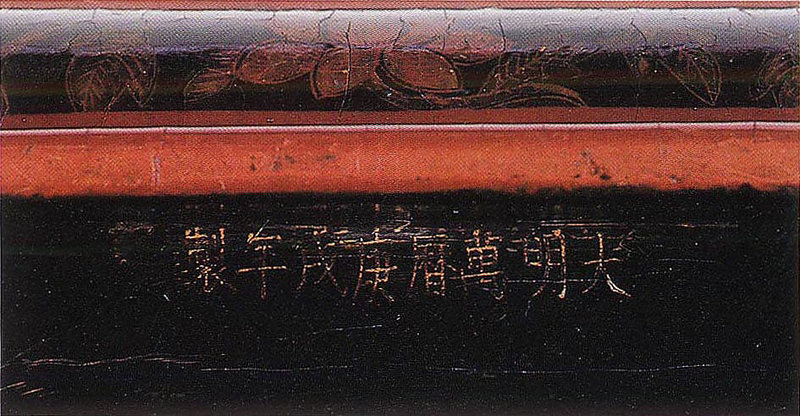























































































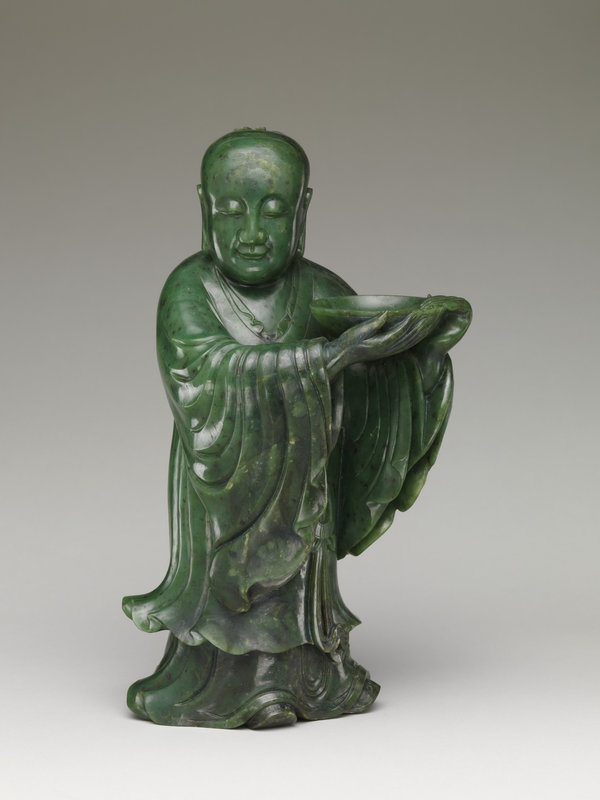
































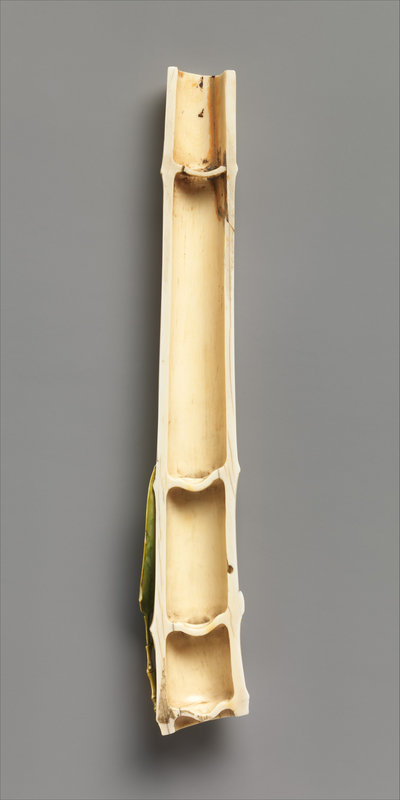






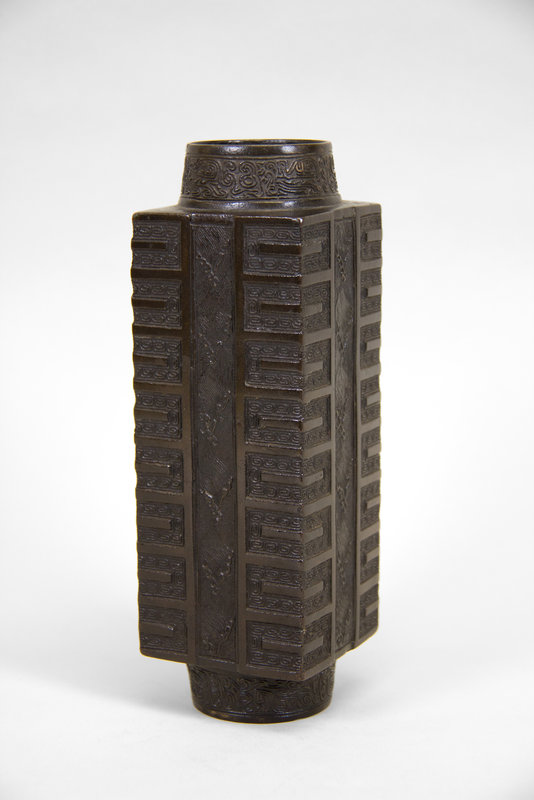





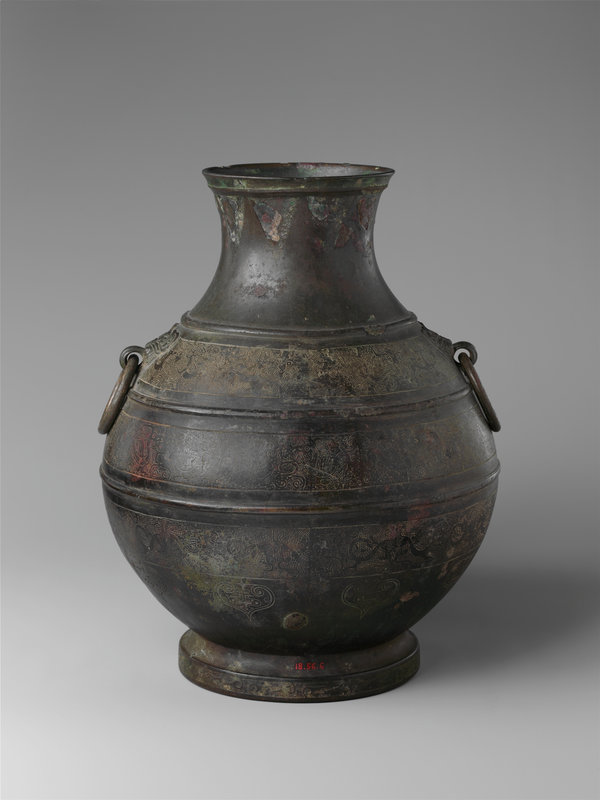






















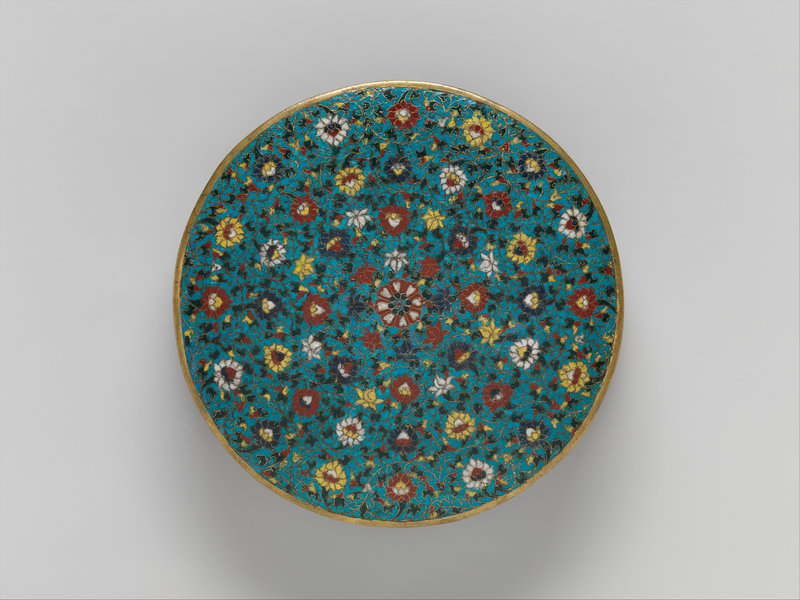











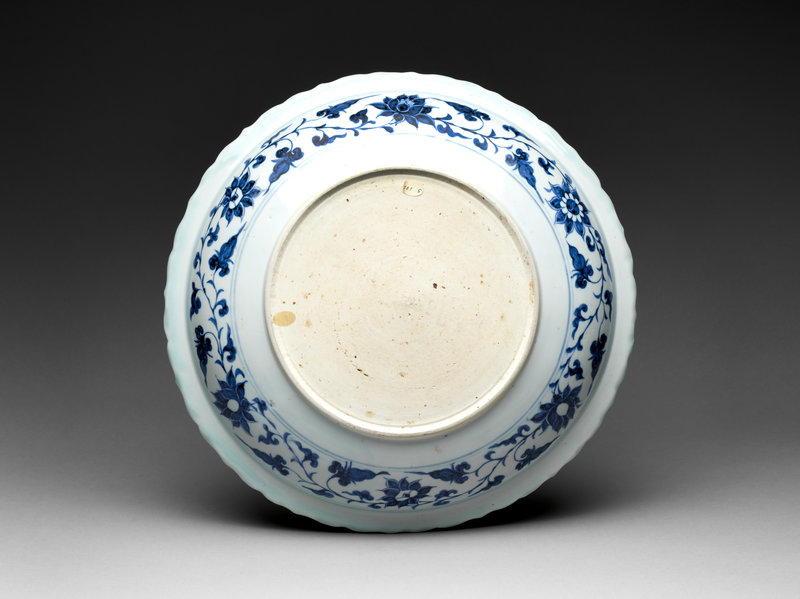





























/https%3A%2F%2Fassets.over-blog.com%2Ft%2Fcedistic%2Fcamera.png)
/image%2F1371349%2F20240425%2Fob_e64568_440367995-1657703268333019-41468471616.jpg)
/image%2F1371349%2F20240425%2Fob_78c699_440320998-1657454638357882-17494889713.jpg)
/image%2F1371349%2F20240423%2Fob_b2fe42_telechargement-9.jpg)